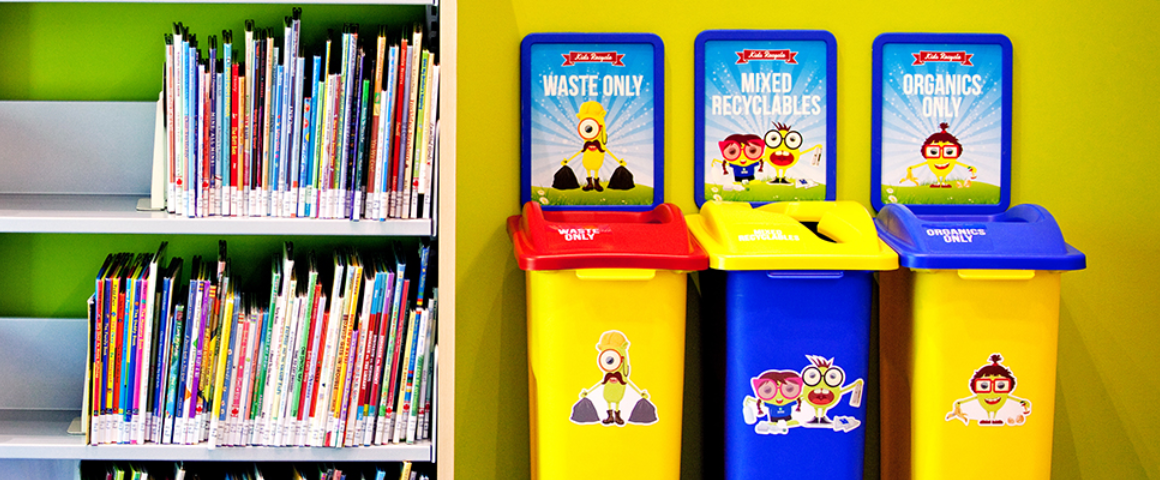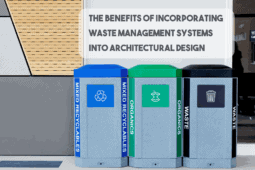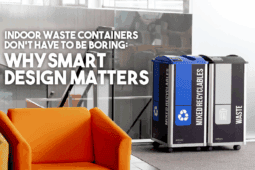9 Essential Secrets to Starting a School Recycling Program
For more information on how to build an exceptional recycling program for your elementary or secondary school, click here.
We’ve been building outstanding public- and private-school waste-management programs for over 35 years. Here are nine key tips that will help you launch the zero-waste program you’ve always wanted — and save money while you’re at it!
Elementary and secondary schools generate a huge amount of waste—much of which is easily recyclable if you implement the right program. With an effective recycling initiative, you can drastically reduce landfill-bound trash and ensure that recyclable materials get turned into new products!
The Key Facts
-
The average secondary school produces about 22 kg of waste per student per academic year, and for primary schools the figure is even higher—around 45 kg per student.
-
At least 40% of a typical school’s waste stream is paper.
-
Glass and plastic beverage containers make up about 15% of a typical school’s waste stream — recycling just one glass bottle saves enough energy to power a 100-watt light bulb for four hours!
-
A school district could gain up to $70,000 added to its operating budget by starting a beverage-container recycling program.
An effective program focuses on reducing waste, re-using what you can, and recycling as much as possible. On the other hand, ineffective programs often generate lots of waste, require frequent maintenance, and lead to high disposal costs. With that in mind—let’s dive into the nine key ways to strengthen your school’s recycling program.
1. Do your homework
First, check whether your school already had a recycling program in the past. What worked? What didn’t? Identify obstacles that may have thwarted previous efforts. Also, familiarise yourself with your local waste- and recycling-laws, what kinds of waste your school produces, and which waste streams your hauler collects (how often, what cost, etc.).
While you’re at it, look for grants or funding opportunities—many jurisdictions offer support for sustainability programs.
2. Begin with a waste audit
To build a successful program, you’ll first want to understand what you’re dealing with. Map out your school grounds (classrooms, hallways, cafeterias, parking lots, playgrounds, etc.) and identify where and what types of waste are generated.
Then review your school’s waste records from the past year:
-
How much waste was created?
-
How often is it collected?
-
Where does it end up?
-
What has already been done to reduce, reuse, recycle?
3. Build a Green Team
You’ll boost your chances of success if you have a dedicated group behind the efforts. A “Green Team” might include teachers, students, parents, custodial staff, or administrators — anyone enthusiastic about sustainability.
This group should have formal oversight, measurement tools, a clear mission and the passion to keep the momentum going.
4. Communicate the program to students and staff
Make sure everyone knows about the recycling initiative and has been taught what to do. This is also the fun part! Leverage tools, posters, contests, announcements, and social-media or parent-newsletter mentions to build excitement and awareness.
Use clear signage with pictures (especially important in K-8 schools) to show what goes in which bin.
5. Adjust operational habits
Small changes in daily operations can make a big difference:
-
Use reusable cutlery and dinnerware in cafeterias OR switch to compostable serviceware.
-
Encourage reusable lunch containers or refillable bottles.
-
Install water-fountains and partner for reusable cups or bottles.
-
Have scrap-paper boxes in classrooms, default printers to double-sided, and reduce paper use by moving communications online.
6. Launch a beverage-container recycling program
Bottles and cans are high-value recycling targets in schools. Tap into local organizations that will pay for recycled containers. This initiative alone could yield substantial revenue (e.g., up to $70K in some districts).
7. Tackle single-use plastics and organics
Many schools are phasing out single-use plastic bottles and similar items. For example, one school issued reusable stainless-steel bottles and eliminated about 500 plastic bottles monthly!
Composting may not be available everywhere, but if it is, partner with haulers or invest in on-site composting. Switching to compostable service-ware helps too.
8. Re-evaluate disposal habits
Traditionally, waste was simply collected and landfilled. Now your Green Team and custodial staff can play an active role: food-waste collection, organics haulers, on-site composting, school gardens — all great ways to reduce landfill burden.
9. Choose the right recycling stations and place them well
The choice and placement of bins is key. If recycling or compost bins aren’t next to trash, people will default to throwing everything in the nearest bin — leading to contamination and your best efforts going down the drain.
Consider:
-
Placement: high-traffic areas, near waste zones.
-
Climate: indoor vs outdoor durability.
-
Capacity: what works in a classroom may not in a cafeteria.
-
Restrictive openings: e.g., round openings for bottles, narrow slots for paper.
-
Signage & labels: use visuals for younger students.
-
Stations, not just individual bins: always pair trash with recycling (and compost where applicable).
Conclusion
Start your program armed with these tips — you’ll see opportunities to improve over time, raise your diversion rate, cut costs, and strengthen your school community’s commitment to sustainability.
Need help getting started? Contact us to chat with our School Waste Management Specialists for more direction on where to begin your journey to waste management greatness.
For more information on how to build an exceptional recycling program for your elementary or secondary school, click here.
Key Takeaways (TL;DR)
-
Conduct background research and a waste audit to understand your school’s current state.
-
Form a passionate Green Team to drive the program forward.
-
Communicate clearly and make recycling fun and accessible for students and staff.
-
Change operational habits: reduce waste generation, reuse items, and move toward compostable or reusable materials.
-
Focus on high‑value recycling streams like beverage containers.
-
Tackle single‑use plastics and organic waste streams (food, compostables) where possible.
-
Choose and locate waste‑stations thoughtfully to minimise contamination and maximise convenience.
-
Every school’s journey is ongoing — small improvements compound over time.








